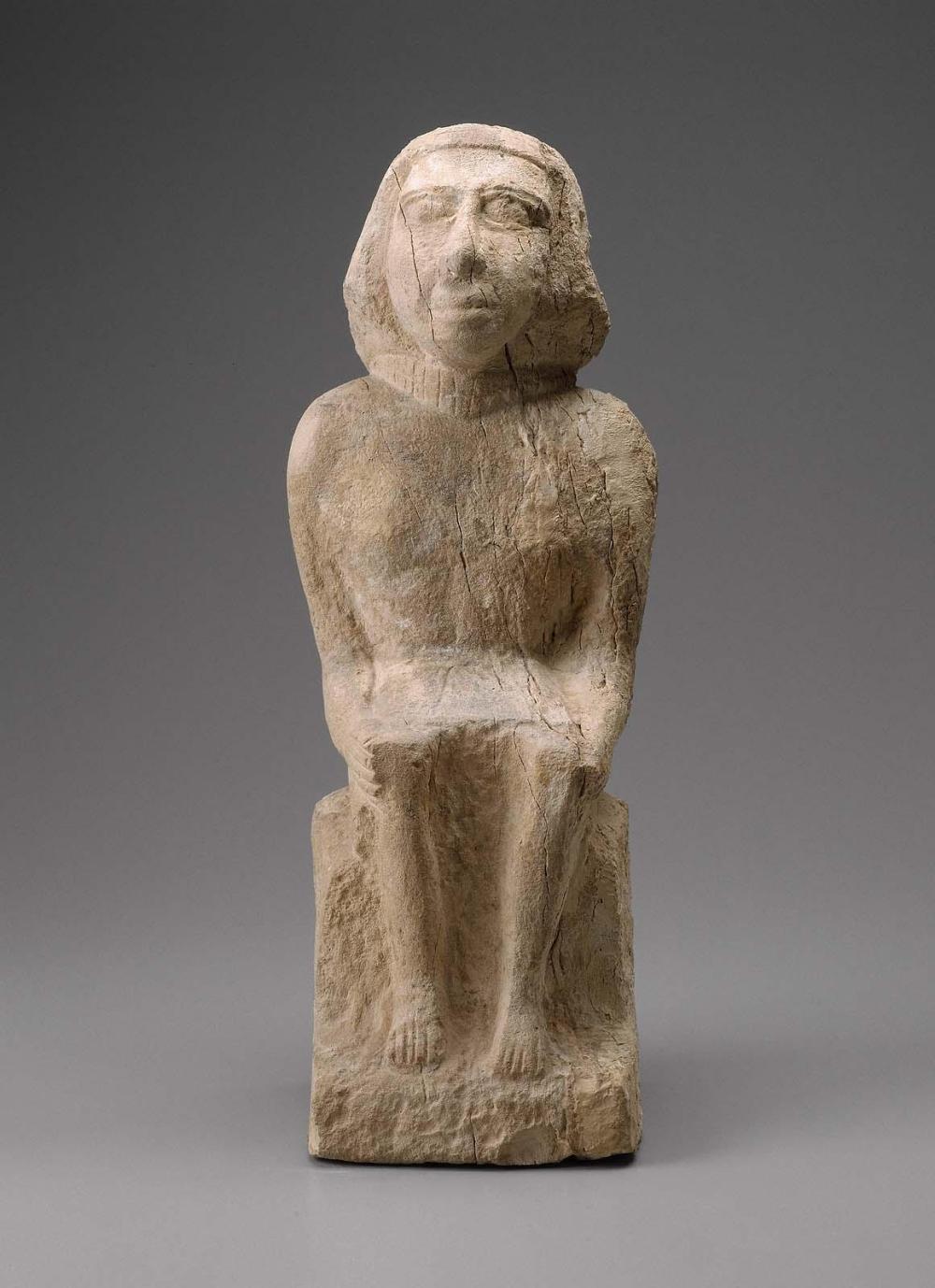Advanced Search 

View: Front
Statue of a seated man
Egyptian
Old Kingdom, Dynasty 5 or 6
2465–2150 B.C.
Findspot: Egypt, Giza, Tomb G 7772
Medium/Technique
Limestone
Dimensions
Height x width x depth: 47 x 17.5 x 19 cm (18 1/2 x 6 7/8 x 7 1/2 in.)
Credit Line
Harvard University—Boston Museum of Fine Arts Expedition
Accession Number39.832
CollectionsAncient Egypt, Nubia and the Near East
ClassificationsSculpture
DescriptionSome statues are appealing because of their superb workmanship, beautiful stone, or interesting composition. This one captivates because it has none of these attributes. From the Old Kingdom through the Late Period, Egyptian artists employed a canon based on natural body proportions to dictate the relative size and shape of each element of the human figure. When those guidelines are applied here, it is immediately apparent that the head is much too large, the neck is nonexistent, the torso tapers abruptly, and the limbs are spindly. In addition, the hands, which traditionally rested atop the thighs, here hug the sides. Was the maker a bad artist? A junior apprentice? Or simply untrained? Was the tomb owner unable to afford better?
At the end of the Old Kingdom, when the economy was drained by nonproductive building projects (including the pyramids) and inadequate crops decreased taxes flowing into central coffers, little sculpture could be commissioned by the king or the court at Giza. Without this forum for the training of artists, what was made exhibited a decided decline in quality.
The tomb from which this sculpture came unfortunately provides no information about its date. A second statue from the same tomb is similar in style and workmanship, but is likewise uninscribed. Although the tomb owner may not have had the resources for an elaborate tomb, it was nevertheless important to include statues of himself in it. He thereby guaranteed that his ka would have a resting place after its rebirth in the afterlife. Despite its crude workmanship, the statue displays a decided spirituality. With his large eyes and head tilted heavenwards, this unnamed man awaits his apotheosis.
At the end of the Old Kingdom, when the economy was drained by nonproductive building projects (including the pyramids) and inadequate crops decreased taxes flowing into central coffers, little sculpture could be commissioned by the king or the court at Giza. Without this forum for the training of artists, what was made exhibited a decided decline in quality.
The tomb from which this sculpture came unfortunately provides no information about its date. A second statue from the same tomb is similar in style and workmanship, but is likewise uninscribed. Although the tomb owner may not have had the resources for an elaborate tomb, it was nevertheless important to include statues of himself in it. He thereby guaranteed that his ka would have a resting place after its rebirth in the afterlife. Despite its crude workmanship, the statue displays a decided spirituality. With his large eyes and head tilted heavenwards, this unnamed man awaits his apotheosis.
ProvenanceFrom Giza, debris on wall of G 7772. May, 1928: excavated by the Harvard University-Museum of Fine Arts Expedition; 1939: assigned to the MFA by the government of Egypt.
